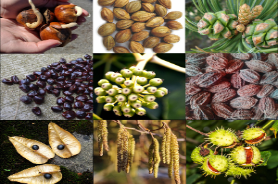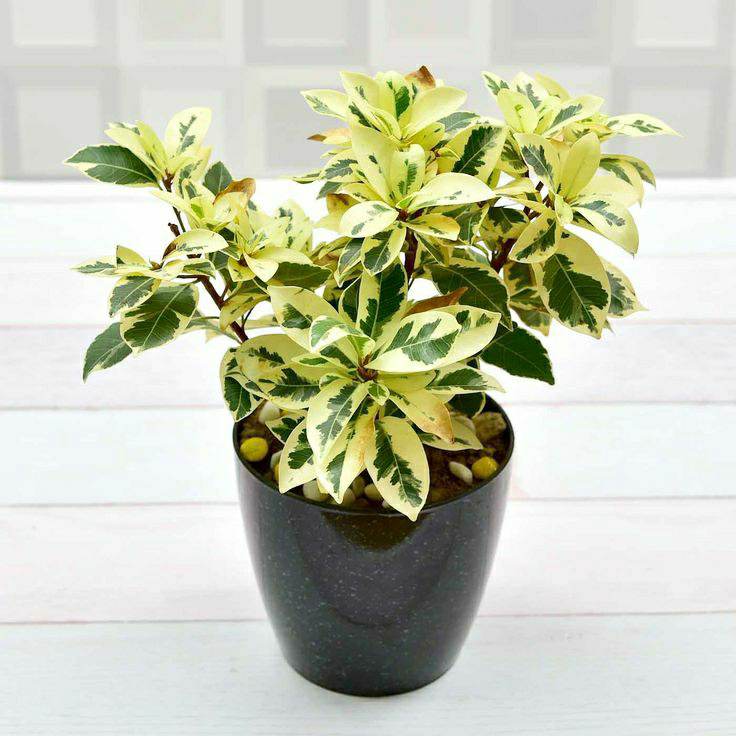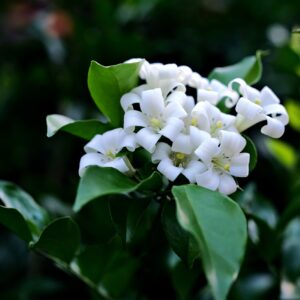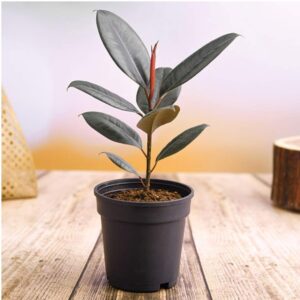Ficus Starlight, also known as Ficus benjamina ‘Starlight’ or Variegated Weeping Fig, is a popular indoor plant known for its striking foliage. Here is a detailed description:
Scientific Name: Ficus benjamina ‘Starlight’
Common Names: Starlight ficus, Variegated weeping fig
Description:
- Leaves: The standout feature of the Ficus Starlight is its eye-catching foliage. The leaves are elliptical or lance-shaped and have a beautiful cream and green variegation pattern. The creamy-white to light green margins contrast beautifully with the darker green centers, giving the plant a starry appearance, hence the name “Starlight.” The leaves are typically 2 to 5 inches long.
- Size: When grown as an indoor plant, Ficus Starlight can reach heights of 3 to 6 feet (1 to 2 meters). It can be kept compact through pruning and maintenance.
- Trunk and Bark: The plant has a slender trunk, which may develop a slightly grayish or beige bark with age. However, the main focus of this plant is its variegated leaves rather than its trunk.
- Habitat: Like other Ficus benjamina varieties, the Starlight ficus is native to Southeast Asia. It thrives in tropical and subtropical climates, where it can grow into a large tree. As a houseplant, it is popular for its decorative foliage.
- Light Requirements: Ficus Starlight prefers bright, indirect sunlight. Avoid placing it in direct sunlight, as this can scorch the leaves. Inadequate light may result in leaf drop and reduced variegation.
- Watering: Maintain even moisture in the soil, allowing the top inch (2.5 cm) to dry out before watering again. Avoid overwatering, as this can lead to root rot.
- Temperature and Humidity: It does well in temperatures between 65-75°F (18-24°C) and appreciates higher humidity levels. Regular misting or using a humidity tray can help provide the necessary moisture.
- Pruning: Pruning can help shape the plant and control its size. Trimming back leggy growth and removing dead or yellowing leaves will promote a fuller appearance.
- Fertilizing: Feed your Ficus Starlight with a balanced liquid fertilizer every 4-6 weeks during the growing season (spring and summer). Reduce or eliminate fertilization in the dormant season (fall and winter).
- Pests and Diseases: Watch out for common houseplant pests like aphids, mealybugs, and spider mites. Regularly inspect the plant to catch and address any issues early.
Ficus Starlight is valued for its decorative foliage, making it an attractive addition to indoor spaces. With proper care, it can thrive and bring a touch of elegance to your home or office.












Reviews
There are no reviews yet.